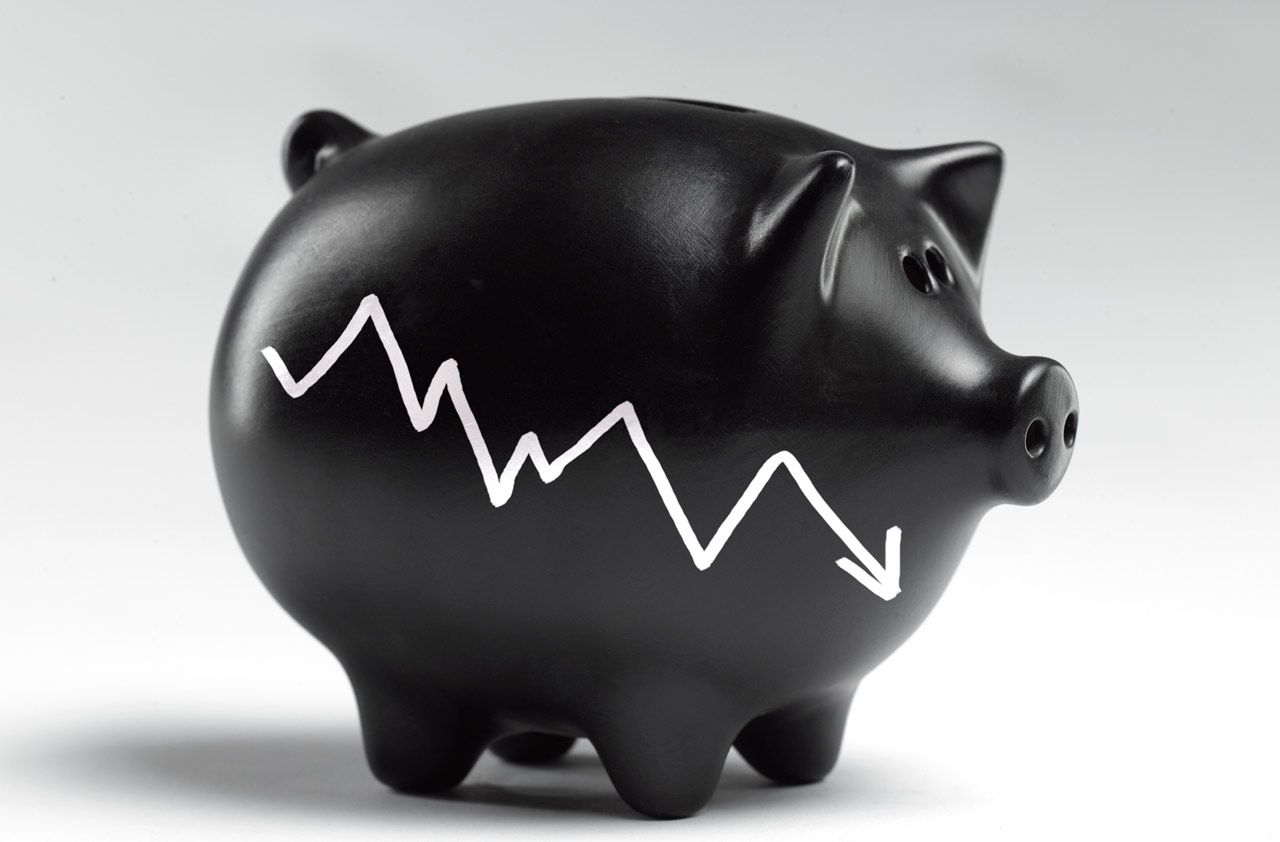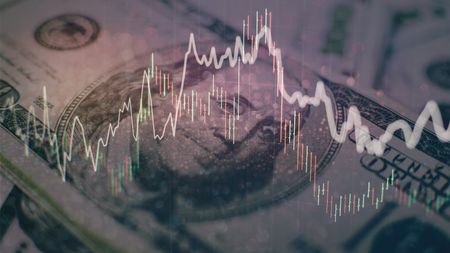Retiring in a Down Market: Managing Sequence of Returns Risk
The longest bull run has finally ended. What new retirees should know now.


It’s finally here: the end of the longest bull run in market history. It was only a matter of time until the market corrected, and now that it has, investors are left wondering how low we will go, and what will happen next.
Watching your 401(k) and investments drop is gut-wrenching for anyone, but those who are newly retired face unique risks and added angst. Their savings has become their source of income, and they need to rely on withdrawals from their investments for their retirement income for the rest of their lives.
The biggest risk doesn’t come from the losses experienced today. Investors need to keep in mind that once you start taking that income, especially when starting in a market downturn, you’re much more vulnerable to market volatility due to sequence of returns risk.

Sign up for Kiplinger’s Free E-Newsletters
Profit and prosper with the best of expert advice on investing, taxes, retirement, personal finance and more - straight to your e-mail.
Profit and prosper with the best of expert advice - straight to your e-mail.
The risk, explained
You may have heard about sequence of returns risk, but what does is actually mean, and what are the impacts on a financial strategy? When a retiree withdraws assets while the market is down, losses on those assets are “locked in,” and the investment value that was removed no longer has the potential to increase if the market rises. Those losses will diminish the total value of remaining assets, so you’re starting with a lower amount than you had originally planned. And if you have the unfortunate luck of retiring amid several bad years, your retirement income is, in turn reducing your overall nest egg. Think of it as reverse dollar cost averaging.
Over a long retirement, this continual chipping away of assets could cause your hard-earned money to run out more quickly than anticipated. And with people living longer than ever before, making sure your money lasts as long as you do it is often a concern among retirees.
With the recent market volatility, which we can only assume will continue, new retirees as well as those getting ready to retire need to face the very real possibility of retiring in a down market. While no one knows what the markets will do tomorrow or 10 years from now, here are a few ideas to help new retirees understand these risks, and help mitigate their effects. The most important thing to remember is it is not too late.
Reassess your withdrawal rate
Many retirees stick with the “4% rule,” and withdraw a set amount from their initial asset value every year. But if you’re in a down market, that fixed amount represents a larger chunk of your total assets over time.
Some retirees’ plans may start with a smaller percentage to make that money last, or instead, take 4% of the current account value each year. It’s important to understand that this means your retirement income may fluctuate from year to year. While it’s not always ideal, as long as you understand annual withdrawals may vary, you can make a plan now to adjust for some non-discretionary cuts in the future. This is a tough strategy that is not very popular as it requires discipline and willingness to “go without” some of the activities that make retirement enjoyable.
Take on less market risk
As you near retirement, traditional wisdom recommends becoming more risk averse. Working with a financial professional, you can determine the right level of risk for your specific situation, and build in a strategy that helps address market risk as you reach retirement age. That way, less of your overall investment is subject to a potentially negative sequence of returns — especially early in retirement when it can cause the most harm.
Explore guaranteed lifetime income
Financial products that provide guaranteed retirement income can also help offset some of the risks that retiring in a down market can pose. Some products, like an annuity, can offer a level of protection against market risk, as well as the opportunity for income increases in retirement. These options may either be built into the contract, or are optional and available for an additional cost.
Protecting yourself from sequence of returns risk
No one knows what the market will do, so one of the smartest things we can do now is to prepare. A financial professional can help you create a retirement income strategy than can help address sequence of returns risks, and also add in some flexibility so you can stay nimble in a volatile market.
While big market drops can be scary, just remember to have faith in the strategy you and your financial professional have developed together, and that the markets have traditionally bounced back — although how high and how long of a bounce can vary greatly. Near and recent retirees are uniquely vulnerable to negative returns, so it’s important to make smart decisions now and to not let emotions get the best of you.
Annuity guarantees are backed by the issuing company.
Get Kiplinger Today newsletter — free
Profit and prosper with the best of Kiplinger's advice on investing, taxes, retirement, personal finance and much more. Delivered daily. Enter your email in the box and click Sign Me Up.

Kelly LaVigne is vice president of advanced markets for Allianz Life Insurance Co., where he is responsible for the development of programs that assist financial professionals in serving clients with retirement, estate planning and tax-related strategies.
-
 Stagflation: What It Is and Why Retirees Should Care
Stagflation: What It Is and Why Retirees Should CareStagflation — the economic bogeyman of the 1970's — may return to the US. Here's what it could mean to your retirement.
By Donna Fuscaldo Published
-
 Why Losing Your Job Could Be the Best Opportunity to Plan Your Future
Why Losing Your Job Could Be the Best Opportunity to Plan Your FutureAmid this uncertainty lies an opportunity for strategic reassessment and personal growth.
By Mario Hernandez Published
-
 What You Don't Know About Annuities Can Hurt You
What You Don't Know About Annuities Can Hurt YouLack of awareness leads many to overlook these potent financial tools, and with the possibility of running out of money in retirement, that could really hurt.
By Ken Nuss Published
-
 Three Keys to Logical Investing When Markets Are Volatile
Three Keys to Logical Investing When Markets Are VolatileFocusing on these market fundamentals can help investors stay grounded rather than being swayed by emotion or market hysteria.
By Dennis D. Coughlin, CFP, AIF Published
-
 Yes, the Markets Are Spooked, But You Don't Have to Be
Yes, the Markets Are Spooked, But You Don't Have to BeIt's human nature for investors to freak out in a downturn. But with a little discipline, you can overcome the urge to sell and stay focused on long-term goals.
By Jimmy Lee, IAR Published
-
 Remembering Bogle: A New Standard for Municipal Investing
Remembering Bogle: A New Standard for Municipal InvestingImprovements in technology, data, systematic trading and risk analytics have led to more successful municipal indexing.
By Paul Malloy Published
-
 Winning Strategies for Financial Advisers as Clients' Lives Evolve
Winning Strategies for Financial Advisers as Clients' Lives EvolveHow can the wealth management industry help make life transitions easier for the adviser and the client?
By David Conti, CPRC Published
-
 How Advisers Can Establish Relationships With HNW Prospects
How Advisers Can Establish Relationships With HNW ProspectsThese strategies can help to build influence with high-net-worth individuals, who are often looking to an adviser for insight rather than solutions.
By Jeremy Green, CFP®, CTFA, CLU®, CEBS®, AEP®, EA, MSFS Published
-
 When Your Car Is Fixed, But You've Still Got the Problem
When Your Car Is Fixed, But You've Still Got the ProblemThis reader's experience with trying to get squealing brakes fixed under an extended warranty mirrors what others are experiencing these days.
By H. Dennis Beaver, Esq. Published
-
 Seven Questions to Ask When Evaluating Personal Loan Options
Seven Questions to Ask When Evaluating Personal Loan OptionsTaking out a personal loan too hastily could lock you into unfavorable terms with an untrustworthy lender. Ask these questions before signing anything.
By David Kimball Published